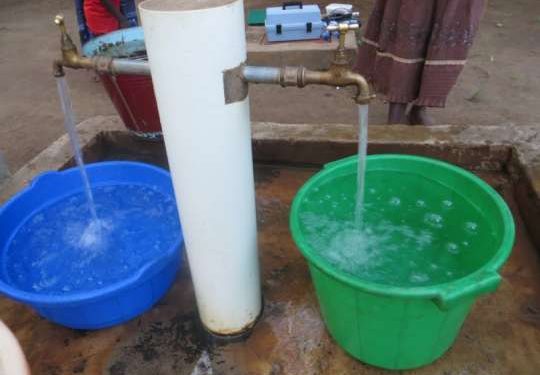The Public Utilities Regulatory Commission (PURC) has justified the increase in utility tariffs beginning today, June 1, 2023, saying, the decision is to enable the utility firms to be efficient and results-oriented.
According to the regulator, electricity utilities are to recoup an amount of GHS1.3149 billion over the next quarter, and this is to help purchase fuel to generate power, transmit, distribute, and continuously serve consumers.
“To recover the full amount, electricity tariffs should have been increased by 27.51%. However, given the approved tariff of 18.36%, an amount of ¢877.70 million will be recovered, leaving a balance of ¢437.22 million to be recovered.”
On the other hand, the amount to be recovered through the water tariff is ¢650.26 million.
This, the PURC, said brings to the reasons for the recoveries, adding “In other words, what and why are we recovering?”
a. The first is the price of natural gas.
In the first quarter tariff decision, Jubilee Oil Field contributed 32.7% of gas, Sankofa contributed approximately 51.8%, while Nigeria Gas (N-Gas) contributed 15.1%. Gas from the Jubilee Field was priced at USD 0.5/mmbtu, Sankofa was at USD 6.6272/mmbtu, while N-Gas was priced at USD 8.1510/mmbtu in the weighted average cost of gas (WACOG).
For the second quarter tariff decision, the contribution of Jubilee Field reduced marginally to 32.2%, whiles Sankofa increased to 53.9%. This reflects changes in the quantity of Natural Gas received from both fields.
The price of N-Gas on the other hand, increased from USD 8.1510/mmbtu to USD 8.6641/mmbtu, reflecting an upward change in price.
The overall implication is that the weighted average cost of gas which was USD 6.0952/mmbtu in the first quarter now increased to USD 6.5165/mmbtu in the second quarter. representing an increase of 6.9%.
Since gas prices are a pass-through cost, the PURC said is imperative that we should pay the gas price differential to enable the power producers to generate enough power for consumption. Thus, the percentage increase of 6.9% had to be passed through the tariff.
b. The second variable is the Exchange Rate.
The projected exchange rate used for the first quarter tariff decision (that is February to April) dwas ¢8.6816 to the US Dollar. Meanwhile, the actual exchange rate for that same period was ¢10.9507 to the US dollar. This led to an exchange rate under-recovery of ¢2.2690.
“It is important to note that all Power Purchase Agreements (PPAs) are denominated in US Dollars. This means ECG buys power in US dollars, but sells in Ghana cedis. The implication is that any under-recoveries with the exchange rate threatens the utility’s ability to procure and sell power. This also threatens the ability of the power generators to procure fuel for generation. Thus, the exchange rate has to be recovered”.
Additionally, the Commission only passed on 75% of the exchange rate under-recovery, which was experienced between September 2022 and January 2023 in the first quarter tariff decision. The remaining 25% which is equivalent to ¢0.6202 had to be recovered. This means that for the second quarter tariff decision, that 25% equivalent to GHS 0.6202 from September 2022 to January 2023 period plus the previous quarter under-recovery of ¢2.2690 has to be recovered.
The Commission however, considered the present economic circumstances of Ghanaians and Industry and decided to recover the ¢0.6202 under-recovery from September 2022 to January 2023 period, plus 50% of the ¢2.2690, which is ¢1.1345 under-recovery of the previous quarter, which comes up to ¢1.7547 (1.1345+0.6202) to be recovered.
c. The third variable for consideration is the Hydro-Thermal mix.
The hydro-thermal mix used for the second quarter is 29.01% for hydro, and 70.99% for thermal; as against 26.11% for hydro and 73.89% for thermal used for the first quarter tariff decision.
The increased hydro allocation of 29.01% helped to reduce the potential tariff by about 2.5%. This means that without the increased hydro allocation, the tariff would have gone up by an additional 2.5%.
d. The final variable is Inflation.
The projected inflation figure for the year was 42.63%.
If this figure is divided into four quarters, that amounts to an inflation rate of 10.66% per quarter.
The average actual inflation for the first quarter was 50.47%. Again, if this is divided by four, an inflation figure of 12.62% is gotten. This means that the inflation effect for the second quarter will be 12.62% – 10.66% which 1.96 is. This figure is that which was considered in the second quarter tariff decision.
The PURC in September 2022, undertook a major tariff review (2022-2025) in which, it considered the cost of operation for regulated utilities, exchange rate, inflation, cost of fuel and other factors.
Since the exchange rate, inflation and cost of fuel are neither under the control of the utilities nor the Commission, variations in these variables are considered as a pass-through cost. Additionally, the energy mix, which is subject to the hydrology of the dam and other climatic factors are beyond the reach of the Commission, thereby necessitating its consideration in any quarterly tariff adjustment.























